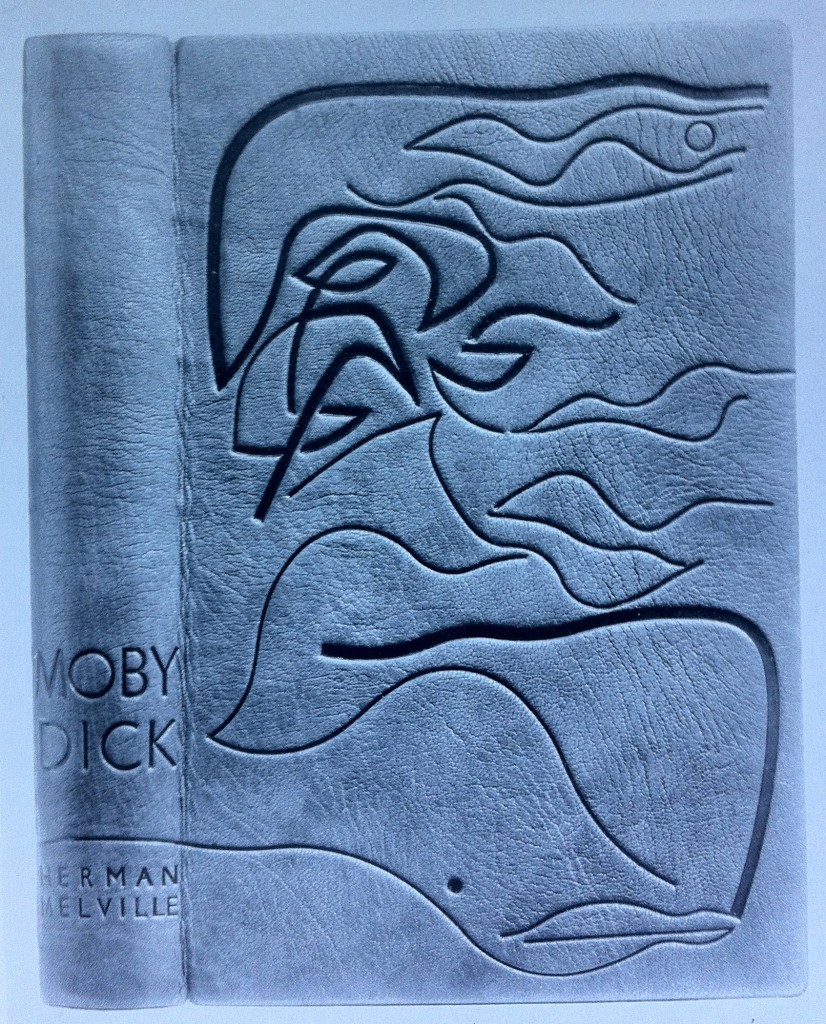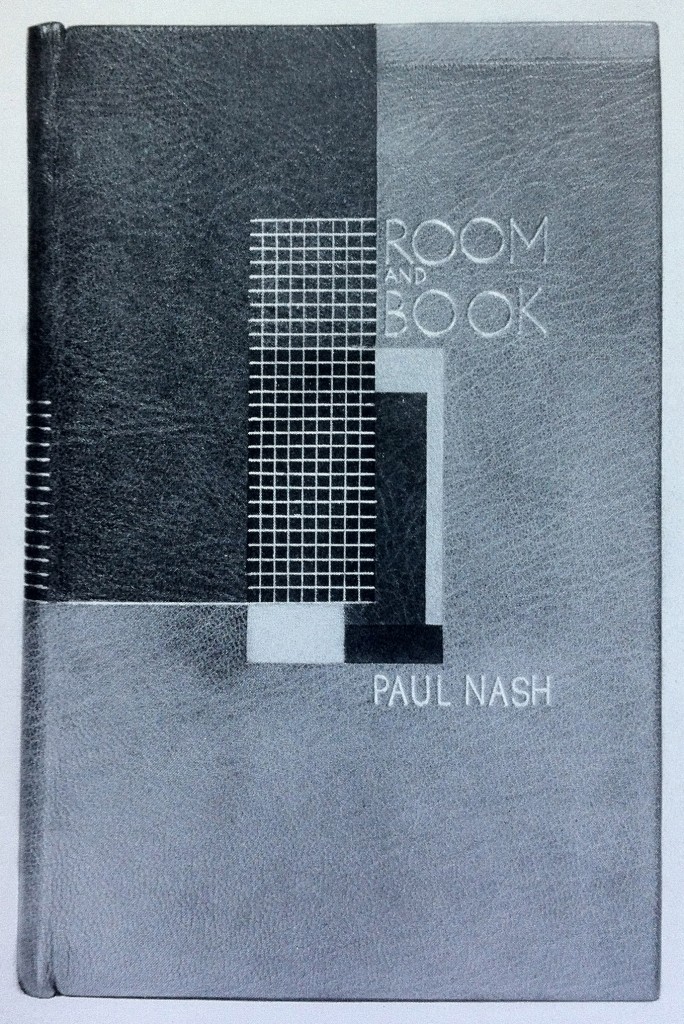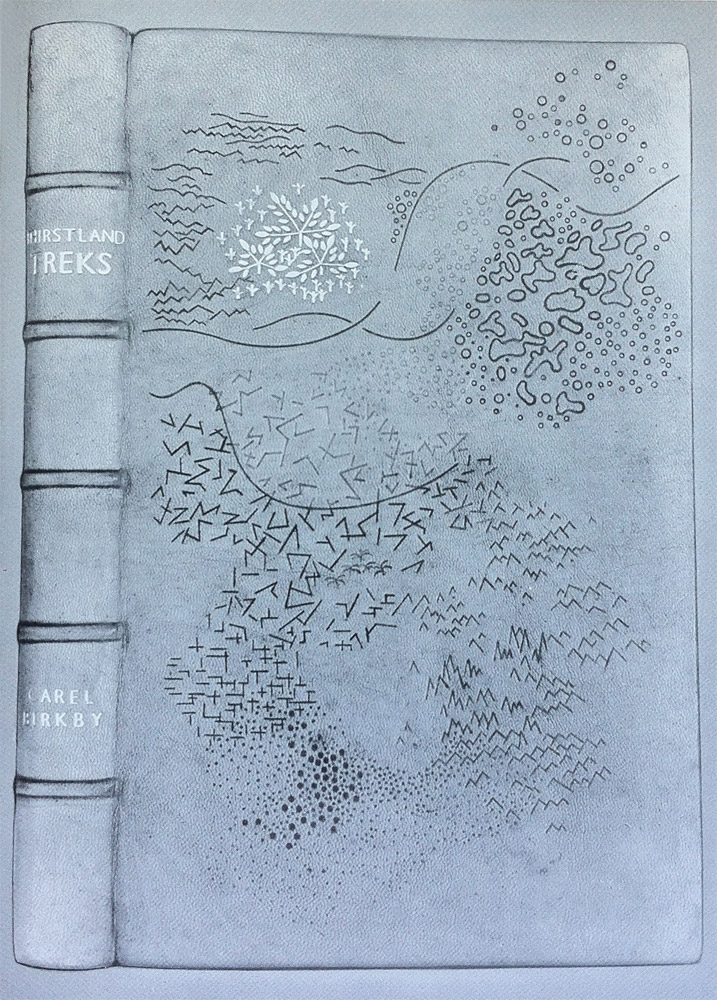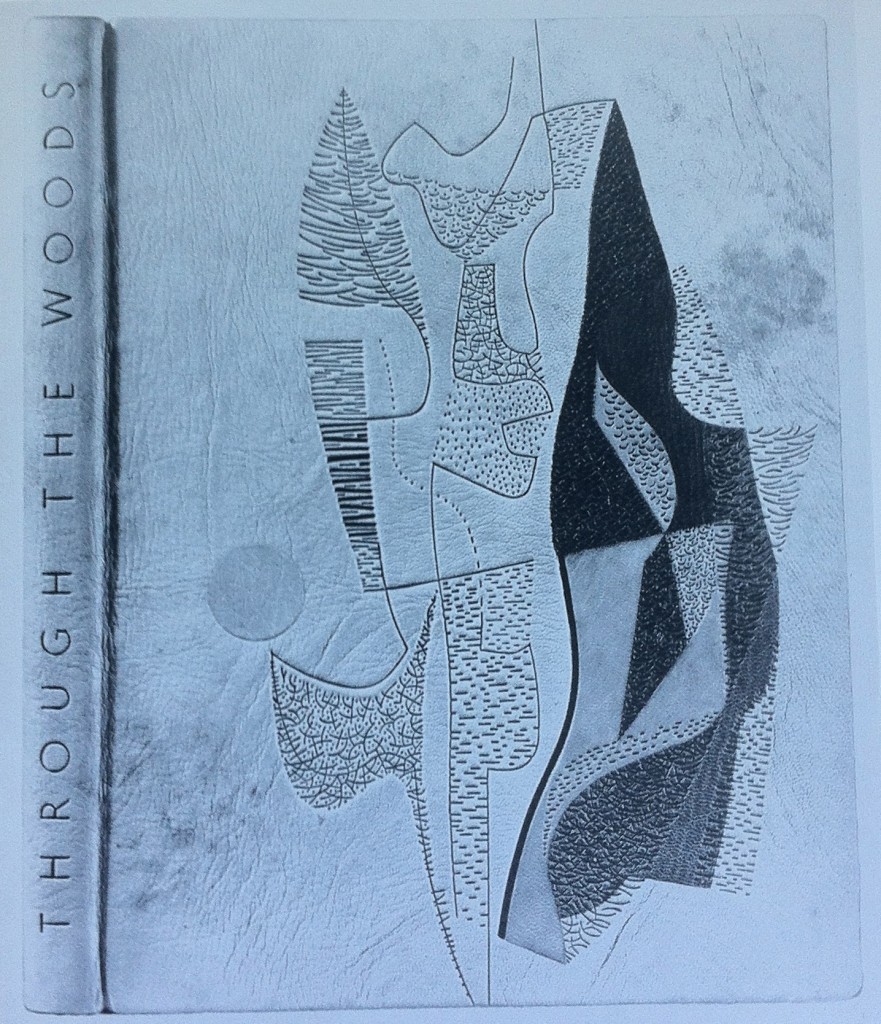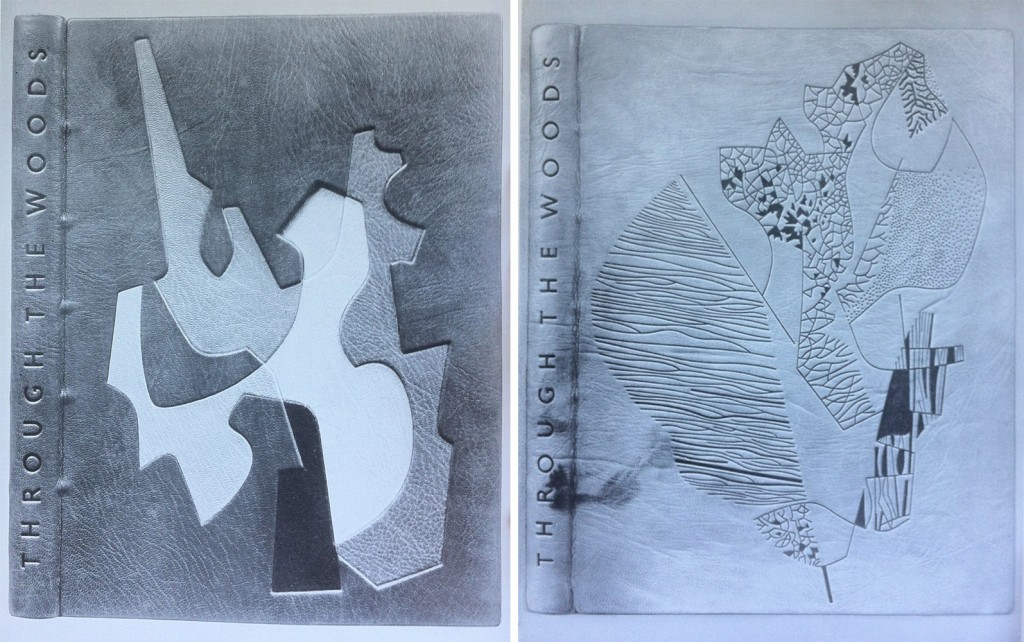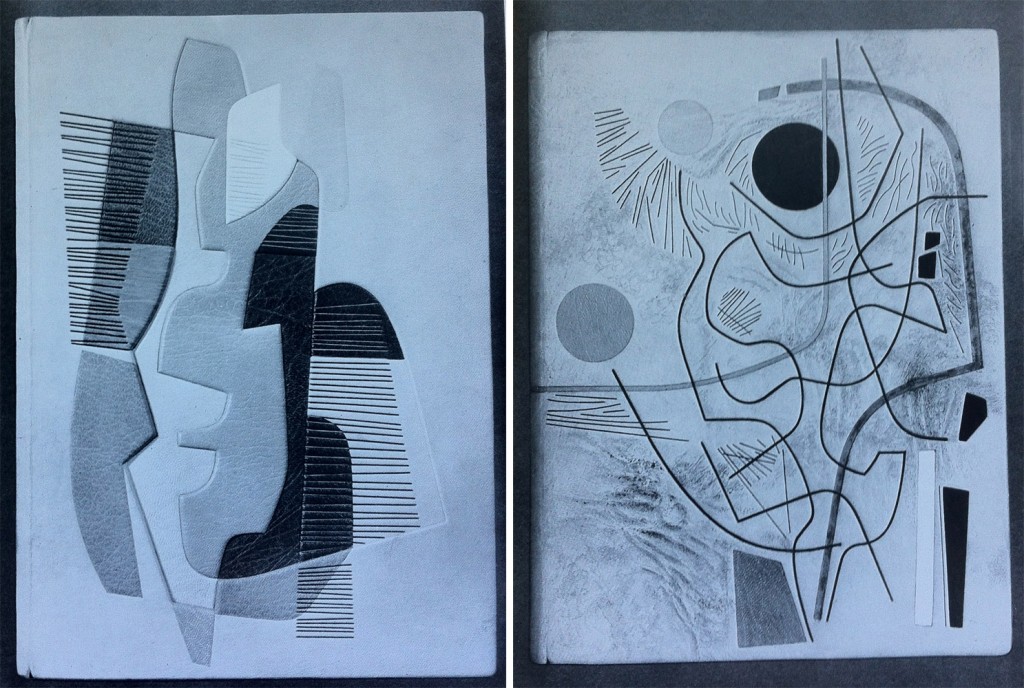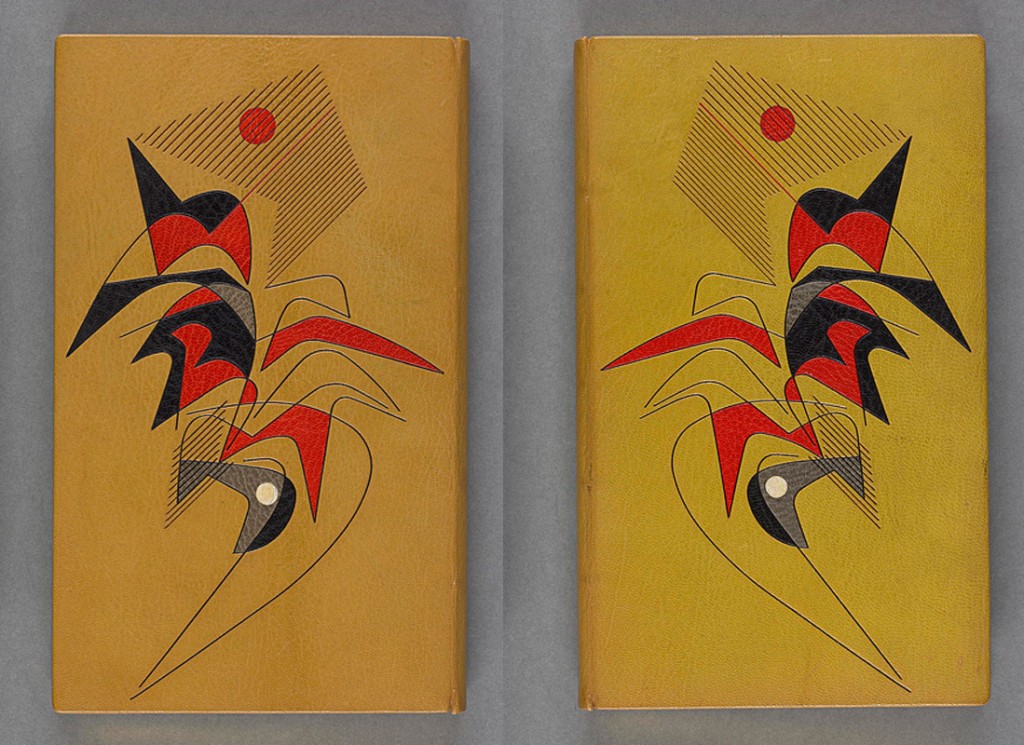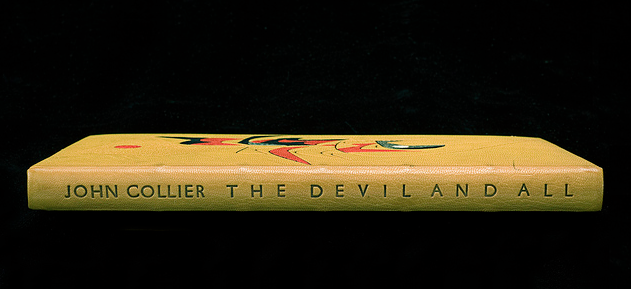Moby Dick by Herman Melville is the classic novel possessing the iconic white sperm whale, whose image graces the cover of this binding by Edgar Mansfield. Following the design of Baudelaire’s Les Fleurs du Mal (1952) and A Rage to Live by John O’Hara (1952), Mansfield created this design for Moby Dick in 1953. Tooling in black, Mansfield creates movement and depth with variations in tone and line width. The book is bound in a native dyed red morocco.
 Les Fleurs du Mal by Baudelaire (The Harvill Press. 1952), bound in yellow morocco inlaid in red and black, tooled in blind
Les Fleurs du Mal by Baudelaire (The Harvill Press. 1952), bound in yellow morocco inlaid in red and black, tooled in blind
 A Rage to Live by John O’Hara (Random House. 1949), bound in orange-red morocco tooled in blind
A Rage to Live by John O’Hara (Random House. 1949), bound in orange-red morocco tooled in blind
